Canada 150 & Me – The Teacher in Me

 At first, the title of this article – Canada 150 & Me – seemed deceptively simple . . . but it wasn’t. The hardest part was deciding what my perspective would be. My mind kept flashing back to 1967., Canada’s 100th birthday celebrations. I was a university student at the time, studying for an education degree, preparing for a teaching career. As part of our Education Faculty’s celebration, I was part of an exchange visit to Montreal and Ottawa. I clearly remember the excitement of seeing our Parliament buildings on a snowy wintry afternoon. Then I realized my perspective – education, then and now, 1967 and 2017, its changes, its implications and my personal observations and experience.
At first, the title of this article – Canada 150 & Me – seemed deceptively simple . . . but it wasn’t. The hardest part was deciding what my perspective would be. My mind kept flashing back to 1967., Canada’s 100th birthday celebrations. I was a university student at the time, studying for an education degree, preparing for a teaching career. As part of our Education Faculty’s celebration, I was part of an exchange visit to Montreal and Ottawa. I clearly remember the excitement of seeing our Parliament buildings on a snowy wintry afternoon. Then I realized my perspective – education, then and now, 1967 and 2017, its changes, its implications and my personal observations and experience.
I , along with many of my friends, was the first in my family to graduate from university. This was a sign of a higher number of students now completing secondary education and a greater accessibility to post-secondary education. We did not, however, graduate with crippling loans, as students today do. In fact, one of my years at university was tuition free, thanks to Joey Smallwood. Our current university tuition fees are still the lowest in the country. Finding a job was easy. I was able to pick the school where wanted to teach. Summer jobs, yes, but working during the academic while still a full time student was a definite no.
 Marshall McLuhan was just coming on the scene, with his trademark statement, “The medium is the message.” The use of computers was just beginning and was predicted to shorten the work week and make life much easier. The question was what would you do with all the spare time that the computer would give you. But for many of us today, our work week is 24/7, as we try to juggle cell phones, tablets, computers, Skype, teleconferencing , , , and the list goes on. Everything has to be done . . . yesterday!
Marshall McLuhan was just coming on the scene, with his trademark statement, “The medium is the message.” The use of computers was just beginning and was predicted to shorten the work week and make life much easier. The question was what would you do with all the spare time that the computer would give you. But for many of us today, our work week is 24/7, as we try to juggle cell phones, tablets, computers, Skype, teleconferencing , , , and the list goes on. Everything has to be done . . . yesterday!
Much of this technology is now used at all levels of education. This is a benefit, especially in schools in smaller or more isolated communities. The number of online university courses are increasing. This, once again, is great for accessibility but in my opinion, has its limitations, when someone can complete a university degree without ever having a face-to-face, all physically present in the same room, discussion or interaction. This seems to take the humanity out of education, and removes human and social interaction. Surely, empathy, compassion, and basic social skills are needed to educate the whole person.
Our elementary, high school and post secondary student population has become more diverse. With more available modes of travel and the implications of the global economy, people travel further and more often than ever before, for career and educational opportunities. Newfoundland fisherman have travelled the high seas for centuries, and now many have flocked to our shores because of the offshore oil industry.
But people travel for other reasons as well, sometimes to save their very lives. In the 1950’’s, there was the Hungarian Revolution with its influx of refugees to Canada. In the late 1970’s, there was the Vietnamese “ boat people” , and now we have the Syrian refugee crisis. I congratulate Canada on welcoming so many Syrian refugees, but I strongly encourage the federal government to continue to assist the refugees who have already arrived and also those who have been approved to come here but are still waiting.
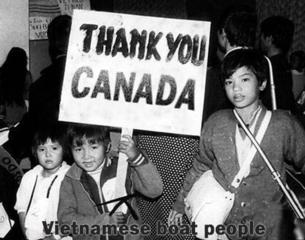 Our parish, St. Pius X Parish, sponsored a Vietnamese family back in the seventies. And most recently, we are sponsoring a Syrian refugee family, who arrived with us last June. In fact, one member of our current refugee committee was a classmate of the daughter from our Vietnamese family years before. Our committee would say that they have probably learned even more than the refugee family themselves. It has made us much more aware of the many issues faced by refugees around the world, and the intricate social justice issues involved. It has been a distinct education for all of us.
Our parish, St. Pius X Parish, sponsored a Vietnamese family back in the seventies. And most recently, we are sponsoring a Syrian refugee family, who arrived with us last June. In fact, one member of our current refugee committee was a classmate of the daughter from our Vietnamese family years before. Our committee would say that they have probably learned even more than the refugee family themselves. It has made us much more aware of the many issues faced by refugees around the world, and the intricate social justice issues involved. It has been a distinct education for all of us.
We are especially blessed by the presence of the ANC, (Association for New Canadians), the only federally funded learning institution for immigrants and refugees in our province. They lease the building that was formerly our St. Pius X Girls’/Elementary School, before it was closed down. They have brought new life to the building, as it continues to provide a venue for education, social justice and pastoral care. Our parish has a truly unique relationship with the ANC, and working with our refugee family has strengthened it even more. 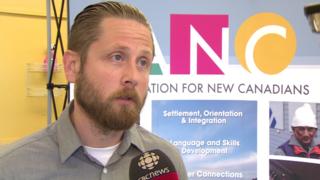
I can remember that when I started teaching, there was only one student in the whole school whose parents were separated. All the other families were the stereotypical family of the time. We did not know about or chose to ignore so many social ills. Since 1967 so many issues have come to the surface such as single parent families, blended families, divorce, domestic violence, sexual abuse, human trafficking, drug addiction, alcoholism, residential schools, and how we treated our aboriginal sisters and brothers. We also did not recognize the gay, lesbian or transgender community. Discrimination based on gender, religion, different cultures and nationalities was also tolerated.
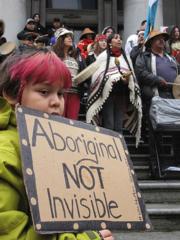 While reading this list of social ills can be very disheartening, at least these issues are now out in the open, where we can be educated about them. There can be some level of accountability and hopefully, we can deal with them in a proactive way, all in a way that respects everyone’s basic dignity as being created in the image and likeness of God.
While reading this list of social ills can be very disheartening, at least these issues are now out in the open, where we can be educated about them. There can be some level of accountability and hopefully, we can deal with them in a proactive way, all in a way that respects everyone’s basic dignity as being created in the image and likeness of God.
Since I was a Catholic teacher for many years and now pastoral assistant in a Jesuit parish, with special responsibility for family faith formation programs, I will now look at religious education, from both a school and parish perspective.
The Jesuits came to St. John’s in 1962 and took responsibility for St. Pius X Parish and nearby Gonzaga Regional High School. Our first pastor was Fr. Fred Lynch and he quickly established the top priority that education would have in our parish. When he arrived the parish infrastructure consisted of one building, called a school/chapel. The government and the Episcopal Corporation jointly built and financed a number of buildings called school/chapels. The ground floor was the chapel (currently our parish hall) and the top floor was the St. Pius X Girls’ School, consisting of six classrooms.
Fr. Lynch saw the dramatic overcrowding in the school, and despite requests to build a church, his priority was to build an addition to the existing Girls’ School building, and to build a brand new school, St. Pius X Boys’ School, both of which the parish fully funded. It was only after this was done, that the next pastor and the parish were able to build the beautiful church we now have.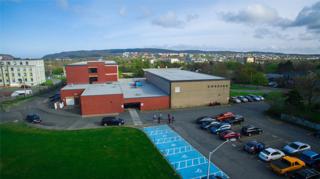
The Jesuit parish priests were a vital presence in our schools. This was especially true in the early days, when the priest would walk through our school building to go downstairs to the chapel for Mass. School Masses, attendance at school events and other activities forged the strong relationship between the school and the parish.
However, in the late 90’s for a variety of reasons, we lost our publicly funded denominational school system, and our three pronged approach to the faith formation of our children, that is home, school and parish, now became a two-pronged approach, that is home and parish.
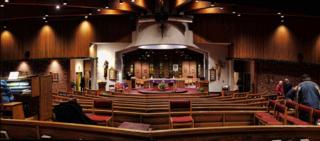 In the years leading up to that, the pastor Fr. Don Beaudois began Children’s Liturgy of the Word and sacramental preparation programs in our parish, while we still had our Catholic school. That helped to prepare the way for when this transition would begin. Fr. Bolton built upon and expanded an already strong foundation. Our parish still maintains a strong commitment to the faith development of our children and youth.
In the years leading up to that, the pastor Fr. Don Beaudois began Children’s Liturgy of the Word and sacramental preparation programs in our parish, while we still had our Catholic school. That helped to prepare the way for when this transition would begin. Fr. Bolton built upon and expanded an already strong foundation. Our parish still maintains a strong commitment to the faith development of our children and youth.
There are so many experiences and observations I could share with you about this topic. But it is time to bring this to a close, lest it become a book and not a blog. Last night I was trying to figure out how I would end this article, what would be my ultimate conclusion. I was puzzled. Then I remembered an observation I often make about myself, “The teacher in you never leaves.” And so the teacher in me asks you to consider the following questions:
If you had to write or speak about Canada 150 and Me, what would you answer?
- What does being a Canadian mean to you?
- What would you like Canada to look like in 50 years time?
- And finally, based on my observations in this article, and, on your own observations and experience, how would you envision our education system during the next 50 years? What values, attitudes and principles should form its foundation? How would you like to describe a person who completes their formal education during the next 50 years?




Bob Sauve
Posted at 14:05h, 28 MarchThanks, Maria, a great read!